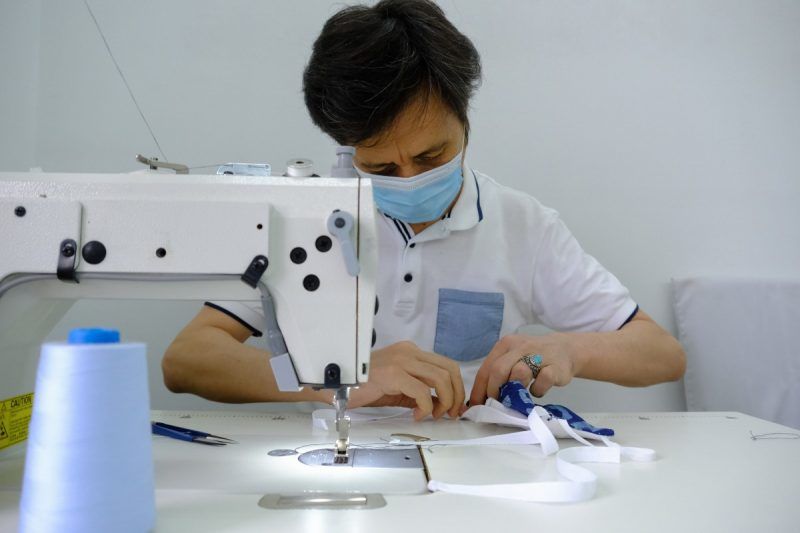
As the novel coronavirus continues its relentless march, governments throughout the Western Hemisphere are scrambling to obtain even the most basic medical supplies. Fear of infection has pushed everyone from health-care workers to bus drivers into a frantic hunt for face masks. Hospitals are struggling to source medications and ventilators. Suddenly everyone is asking why it is so difficult to find local providers of these essential goods, and why the few reliable suppliers are concentrated in a handful of countries on the other side of the planet.
Imagine how different the situation would be if multiple manufacturers of medical supplies were located in the Americas, and if they relied on local or regional suppliers that could quickly ramp up production of personal protective equipment or chemical reagents for test kits.
This isn´t a fantasy. Economists have argued for decades that the Western Hemisphere can create far more muscular regional supply chains, and not just for medical products.
From Canada to Chile, the hemisphere already produces sophisticated goods and services ranging from satellites and aircraft to quantum computers, vaccines and cloud-based applications. Not long ago, virtually all the region’s leaders argued it was strategically important to invest further in this capacity. In 1994, presidents from 34 Western Hemisphere nations called for creating the Free Trade Area of the Americas by 2005. They saw this as a means to create tens of millions of jobs and make our economies far more resilient to global downturns and supply shocks.
Soon afterward, however, the so-called Tequila Crisis and other events diverted attention from this agenda. Rising Asian economies also began buying unprecedented quantities of commodities from Latin America and producing goods at rock-bottom prices. Companies around the world shifted their manufacturing to Asia in a bid to lower costs.
We now see that this “pivot to Asia” was shortsighted. While trade with Asia has yielded many benefits, the unfathomable damage unleashed by covid-19 shows we underestimated the economic, health and geopolitical risks of concentrating so much of our supply chains so far away from home. We also underestimated the importance of enforceable investment and property-rights rules.
As they lay the groundwork for a post-pandemic recovery, the hemisphere’s governments should seize the opportunity to correct this imbalance. With millions of people losing their jobs, now is the time to forge a hemisphere-wide market that will create new sources of employment and help drive a long-term, sustainable economic recovery.
This is not an argument for restricting trade with Asia. Over the past 15 years, I have seen how trade agreements and global commerce fuel growth and development. At the Inter-American Development Bank, we estimate that without the nearly 40 regional trade agreements we already have in place, per capita gross domestic product in the Americas would be up to 40 percent lower than it is now.
But trade within this hemisphere — particularly for high value-added goods and services — has considerable room to grow. Increased intra-regional trade has powered much of Asia’s and Europe’s growth over the past two decades. It should do the same for us now.
To achieve this goal, the hemisphere’s countries will need to work on two fronts.
First, Latin American and Caribbean nations must substantially upgrade their ports, airports and broadband infrastructure. This is the only way to lower trade and transportation costs, This is the only way to lower trade and transportation costs, which are almost double those of North America and Europe. Fortunately, with interest rates near zero, financing for such projects will be available for countries that can present attractive legal and regulatory guarantees.
Second, the hemisphere’s governments should agree to expand their already extensive network of bilateral trade deals in order to increase market access and regulatory harmonization. The recently renegotiated U.S.-Mexico-Canada Agreement shows that we can achieve consensus even in times of political and economic tension. The severity of this crisis could create once-in-a-generation momentum to work out remaining disagreements and to forge a visionary framework that fully anticipates the potential of the digital revolution.
Even before the pandemic, there were signs of a realignment in trade. A report from Kearney found that between 2017 and 2019, Mexico’s exports to the United States rose from $278 billion to $320 billion, as manufacturers left Asia for Mexico. In the coming year, as more companies seek to diversify risks and locations in a post-pandemic world, the question is whether they will consider “near-shoring” to cities such as Guadalajara, Curitiba and Medellin, instead of Hanoi, Kuala Lumpur and Surabaya.
For too long, our leaders have made trade diplomacy and sourcing decisions solely on market size and cost. Investing at home and in the region will not only help us better protect the safety of our citizens over the long term but also help generate the economic growth and jobs that are the only effective deterrent to illegal immigration.
A recovery made in the Americas is eminently attainable. Let’s not let this crisis go to waste.
Luis Alberto Moreno is president of the Inter-American Development Bank in Washington.
